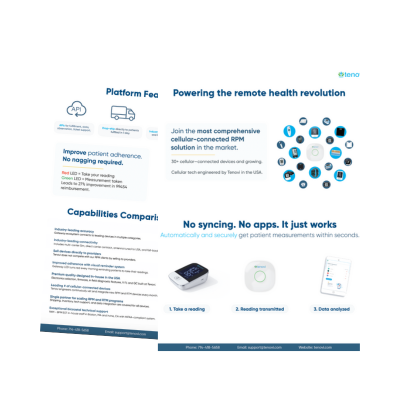The Centers for Medicare & Medicaid Services (CMS) has released its proposed Physician Fee Schedule (PFS) for calendar year 2026 and for practices offering remote patient monitoring (RPM), it may mark an important shift in reimbursement policy since RPM codes were first introduced. CMS Proposed Rule 2026 includes new time and device codes, and expanded flexibility. This article outlines the proposed changes to the current 2025 CPT Codes, and their implications for clinical and operational workflows.
CMS Proposed Rule 2026: New Device Supply Code
CMS Proposed Rule 2026 proposes a new code: 99XX4 to account for RPM services delivered over 2 to 15 days within a 30-day period. The current CPT 99454, which applies to 16 or more days of device use, would remain for patients with longer-term monitoring needs. The big shift is that both codes would receive the same reimbursement. This may represent an understanding that the value of RPM lies in the volume of transmissions and the availability of the service itself. Providers would no longer be penalized for clinically appropriate lower-frequency monitoring.
New Code for Shorter Clinical Interactions
The CMS Proposed Rule 2026 addition of 99XX5 would allow billing for 10 to 20 minutes of RPM treatment management services. This fills a long-standing gap: until now, providers were only reimbursed for RPM-related time once they hit 20 minutes (via CPT 99457), with no way to capture meaningful, but shorter, interactions.
CMS also rejected a proposal from the American Medical Association to reduce the reimbursement for CPT 99457 and 99458. This maintains stability for existing programs while opening a path to additional, incremental billing through 99XX5.
CMS Proposed Rule 2026 Shifts Valuation Methodology
Historically, RPM code valuation depended on survey data submitted to the AMA’s Relative Value Scale Update Committee (RUC). CMS now proposes moving to a claims-based approach, using data from the Outpatient Prospective Payment System (OPPS). The shift is intended to yield more reliable and representative valuations based on actual service utilization.
2025 vs. CMS Proposed Rule 2026 Billing
| Category | 2025 CPT Requirements | Proposed 2026 Updates | Payment Notes |
|---|---|---|---|
| Device Supply | CPT 99454 requires 16 or more days of monitoring data | 99XX4 for 2–15 days of data; 99454 revised to cover 16–30 days | 99XX4 and 99454 would be reimbursed at equal rates |
| Care Management Time | 99457 for initial 20 minutes; 99458 for each additional 20 | 99XX5 added for an additional 10–20 minutes | 99XX5 reimburses at approximately 50% of 99457 |
Eligibility
The CMS Proposed Rule 2026 lowers the barrier for enrollment, allowing providers to serve patients who previously did not qualify, including:
- GLP-1 patients requiring weekly weigh-ins.
- Post-operative patients with short-term monitoring needs.
- Behavioral health patients who use devices intermittently.
Clinical Workflows
The introduction of a 10-minute time code for reimbursement is more inline with patient engagement. Providers often deliver care in brief, high-value interactions that have gone unbilled. This change would allow for more accurate compensation without inflating documentation. Between the expanded device code, time-based billing improvements, and preserved reimbursement rates, practices are give an opportunity to scale RPM programs more efficiently.
The CMS Proposed Rule 2026: Preparing
There are some things healthcare organizations can do to prepare for the CMS Proposed Rule 2026 changes to RPM billing. Health teams may want to consider auditing their current patient base to identify those who regularly fall short of the 16-day monitoring threshold or receive less than 20 minutes of monthly clinical engagement. These populations may soon be eligible for RPM which can be billed under the new rules. Clinical teams may want to consider adjusting workflows to accommodate shorter, 10–20 minute interactions, particularly if care coordinators or health coaches are involved.
While the changes are not yet finalized, CMS is currently accepting public comments through September 12, 2025. The Final Rule expected in November. The proposed rule is available on the CMS website. Additionally, CMS is placing increased emphasis on clinical outcomes and real-world utilization, suggesting that practices may benefit from tracking the effectiveness of their RPM programs. If finalized, the 2026 Final Rule would eliminate key administrative barriers and allow providers to scale RPM programs more efficiently, expanding access and enhancing care delivery across a wider range of patient populations.


